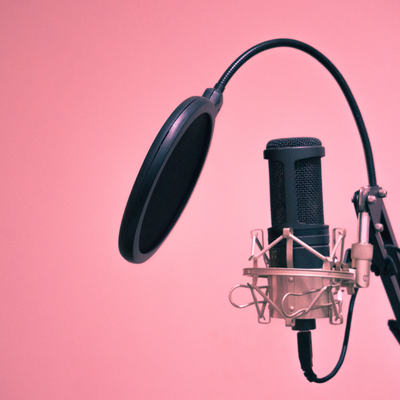If you are an online music student you might already own a microphone, but this blog will discuss the different types of microphones are out there and ultimately which is best for you. While there are many technical considerations, we will focus on the general concepts of each microphone.
There are many different reasons why you might want to invest in your own mic, and certainly the Pandemic has added another reason. Sharing anything is not something that is encouraged during today’s climate.
There are of course several considerations when looking at what might be suitable. Cost, type of environment, and the level of care needed are considerations for the three types of mics we will discuss, which are Dynamic, Condenser, and Ribbon.
Dynamic
Affordable, strong, and up for many tasks, this type of microphone is a great first investment. The most popular Dynamic Microphone found in most recording studios is the Shure Beta57 and Beta58. At a price point of under $150, it is a favourite amongst beginner musicians as it can take a beating, but of course, care should always be taken to not drop it. Out of the three mics discussed here on this blog, this one can take the most abuse. It is just as good for a noisier environment as it is for picking up what is directly in front of it but ignoring what is around it. Where it does lack is when needing to pick up quieter sound sources. If this is what’s needed, a condenser microphone might be just the thing!

Condenser
Higher cost, more sensitive, and able to pick up quieter sound sources. This microphone is a great step up from its dynamic brother. It comes in both large and small diaphragm versions and does require a power source called phantom power in order to operate. There are many makers and models, preference largely comes down to taste and dependability. AKG C1000S are great for horn microphones, the Rode NT2A is a wonderful all-around option, and if you are trying to pick up a room sound look at the Rode NT5. Still, want more?
Ribbon
If you want to pick up and replicate the most accurate version of your sound source, a Ribbon is your best friend. However, this friend comes at a cost and it’s not cheap. Most are $1000 and up, some can be below this price point but quality must be considered when searching for the perfect Ribbon. These are also the most fragile of all microphones. Consideration must be given to handling with the utmost care. Royer 121/122 and the AudioTechnica AT4081 are great starting points when researching this type of mic.

Other considerations
Of course, no mic is complete without a stand. Consider not buying the cheapest stand, especially if you take the stand with you to gigs. A mid-level stand can be around $50 but is well worth the extra money due to the longevity.
XLR cables, the type of cable that connects the mic to the soundboard, are also a good investment. Try to get a 50’ cable to make sure there is enough length, but remember that you can also put two XLR cables together to extend. Last but not least, a windscreen or windsock will be useful, especially when using the mic outside.
Now that you are familiar with the basics, explore and find out which mic gives you the sound you are looking for because at the end of the day that is what matters most.
What else can you do to help your journey to becoming the musician you want to be? Check out THIS BLOG if you are an Adult Learning to Play Music and CONTACT US for private online music lessons to fast charge your progress on any instrument.
